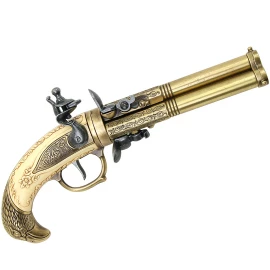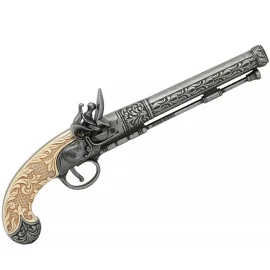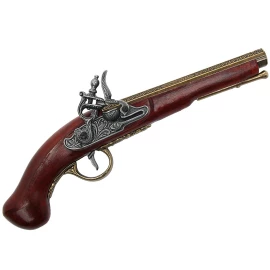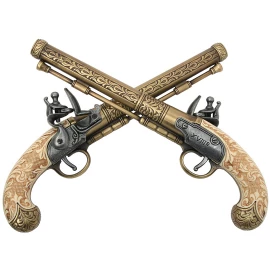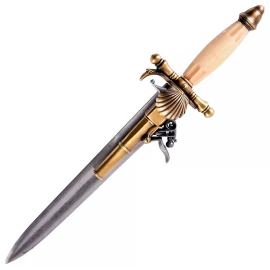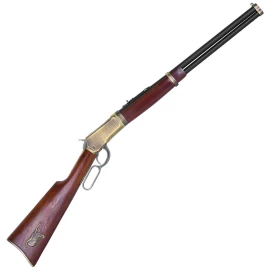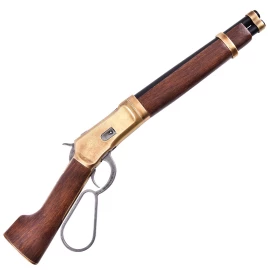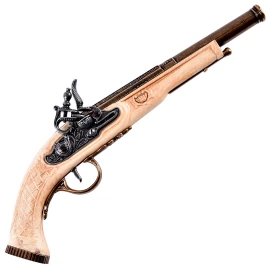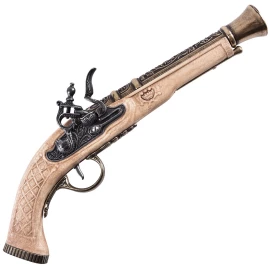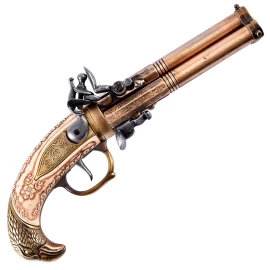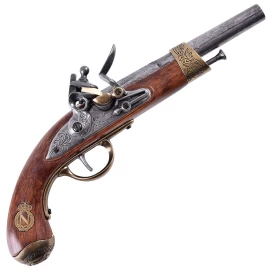Percussion and Flintlock Pistols
Flintlock firearms or true flintlock was introduced in 17th century, replacing the earlier ignition technologies, such as the matchlock or wheellock. Flintlock firearms were easier to reload and made it possible for soldiers to shoot as quickly as one shot per minute. Flintlock typically had a hammer which was released by pulling the trigger. The hammer then swings forward, opening the cover to a concealed flash pan, which contains a small charge of gunpowder. The strike creates a spark which ignites the powder. Flame burns through a small hole into the gun barrel and ignites the main propellant, causing the weapon to fire.
The flintlock was invented by French gunsmith Marin le Bourgeoys. He also made the first model of the flintlock pistol for the French King Louis XIII, who considered them works of art and gifted them to highly esteemed visitors. The production of flintlock pistols was relatively inexpensive, so it was possible to use them in the army. Flintlock pistols remained prominent on the battlefield for the next 250 years, until they were replaced by firearms with a percussion lock. Percussion lock system uses a hammer that strikes and sets off the gunpowder charge.
Most of our guns are dummy guns that will, however, still make a fantastic addition to your collection of historical weapons. Before you choose your favourite, read our article about the history of firearms.

